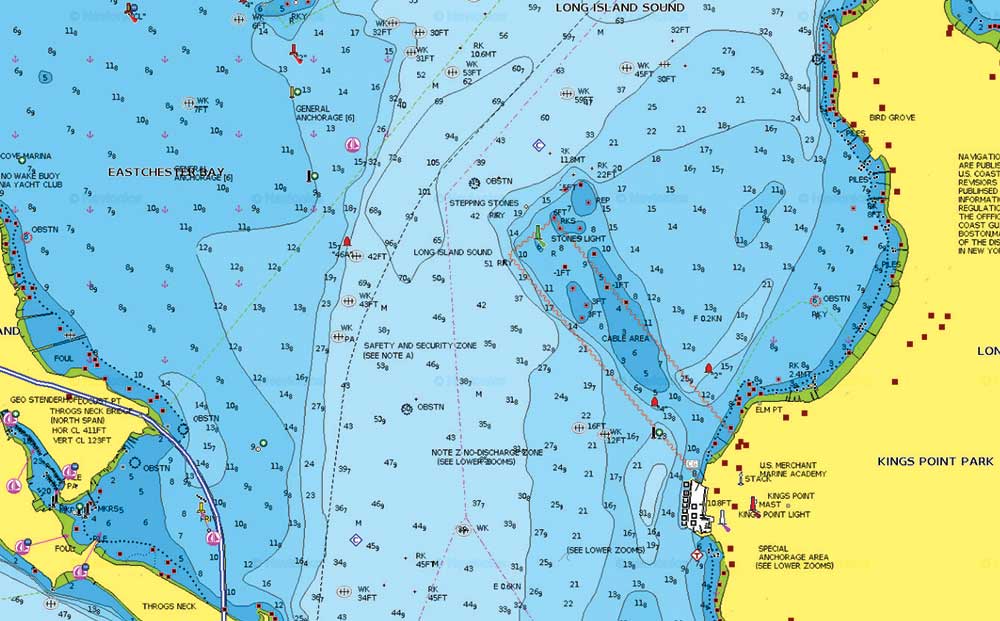
40 49.276 N / 73 46.291 W
The Stepping Stones Lighthouse sits atop a rocky foundation east of the Throgs Neck Bridge, and off the tip of City Island, the Bronx. Since 1878 the green flashing light at Stepping Stone has warned boaters to stay clear of the clam and mussel encrusted reefs south of the lighthouse. Stepping Stone is just a hop, skip and a jump from most Western Sound locations and home to some fine striped bass, bluefish and fluke fishing. The combination of rocky lairs, steep drop-offs, moderate currents and myriad baitfish blend for just the right elements to make Stepping Stones the ideal fish habitat.
The action starts here in May once the bunker show and begin to get devoured by large stripers. Snagging and live lining or chunking bunker are the most common and productive methods that are normally applied. With some bunker aboard and stored healthy in the live bait well, head west of the light just south of Buoy 46 A and fish the bunker right along the drops-off from 30 to 60 feet of water. You can also do some drifting along the mussel and rock-strewn bottom between Buoys 46 A and 48. Here many bass congregate among the rocks looking to attack unsuspecting prey.
If live bunker are not available, chunks of fresh bunker would be second best. Fish the chunks on the bottom with 3-way or fish finder rigs. Sinkers complete the terminal end of the tackle with 2 or 3 ounces of lead often enough to hold bottom. When chunks are employed, anchoring is paramount. This especially holds true along the southwest side of the light between 40 and 50 feet of water, primarily along the rocky ledges and drop-offs.
Anglers looking for alligator size bluefish have come to the right place as teen size choppers do a fine job of terrorizing the area’s local bunker population nearly daily from mid-July to mid-October. You can employ the same method with the choppers as you would with the bass. Then again, you can always do it the fun way by employing diamond jigs. Speaking of using diamond jigs, you may want to work 2- and 3-ounce jigs in the deeper water spots between the light and the Throgs Neck Bridge, particularly if you are marking fish on the depth recorder.
The summer months are a good time to sharpen fluke skills, particularly just northwest of the light in 35 to 40 feet of water, concentrating your efforts just off the shoals in that area by starting your drifts in 12 feet of water and jigging downward to 40 feet. This process is reversed when the tide turns. Berkley 4-inch swimming mullet in white and chartreuse on 1/2- to 1-ounce Spro prime bucktails in white, spearing and glow all produce remarkably well. Plain Jane fluke rigs with the usual spearing and squid combo are effective as well.

